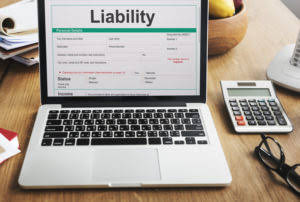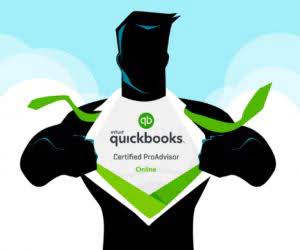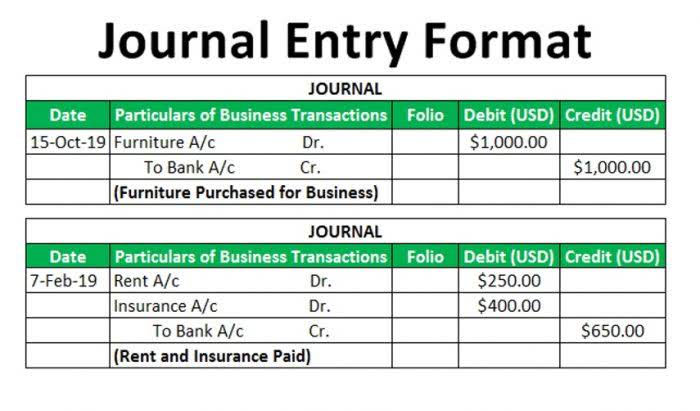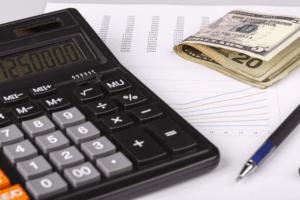The net gain or loss appears at the bottom of the report and is what’s known as the “bottom line” in accounting. There are two basic methods of creating a profit and loss statement manually. Also known as gross income, gross profit is net revenue minus the cost of goods sold. Required by lending institutions and investors alike, a profit and loss statement can also help you pinpoint areas of success as well as spots where your business may need additional help. OneUp is an affordable, easy to use accounting software application well suited for sole proprietors, freelancers, and small business owners. Offered on the cloud, OneUp works on desktop systems, laptops, and all mobile devices.
- While a net profit is always something to celebrate, a net loss doesn’t always mean your business is in trouble, especially when first starting out.
- This means that a company using the accrual method accounts for money that it expects to receive in the future.
- It is important to compare the income statement with the cash flow statement since, under the accrual method of accounting, a company can log revenues and expenses before cash changes hands.
- A P&L lets you break them down into separate line items on your statement.
Gross Profit
Suppose we’re creating a simple profit and loss statement (P&L) for a company with the following financial data. Your Bench account’s Overview page offers an at-a-glance profit and loss statement, allowing you to review your profitability and stay on top of your top expenses from month to month. Spend less time figuring out your profitability and more time optimizing it with Bench.
The single-step method
Whatever your preference, the best way to create a profit and loss statement is by using accounting software, which will take care of the entire process for you. If you currently do not use accounting software, you can use a template to create a profit and loss statement. It captures a snapshot of the business’s assets, debts, and equity in a single moment, whereas a P&L statement demonstrates the performance of the overall business. Common size profit and loss statements include an extra column of data summarizing each line item as a percentage of your total revenue. If you have a bookkeeper or accountant, they may already generate P&L/income statements for you.
How much are you saving for retirement each month?
Creating a profit and loss statement for your small business is vital since it’s one of the best reports to determine whether your business is profitable. This number can tell you how well your products are performing or whether your services are profitable. The next step is to calculate any interest payments, taxes due, as well as depreciation and amortization expenses.
© AccountsBalance, 2024. All rights reserved. An EcomBalance Company.
Companies with several business segments may break out revenue for each separate division. Net pay is the difference between employee earnings and the withholdings from those earnings. To calculate net pay, employees subtract the tax and other withholdings from their gross pay. YTD net pay appears on many paycheck stubs, and this figure includes all of the money earned since Jan. 1 of the current year minus all of the tax and other benefit amounts withheld.
Components of a P&L statement
The P&L or income statement, like the cash flow statement, shows changes in accounts over a set period of time. The balance sheet, on the other hand, is a snapshot, showing what the company owns and owes at a single moment. It is important to compare the income statement with the cash flow statement since, under the accrual method of accounting, a company can log revenues and expenses before cash changes hands. It records income and expenses when the business receives or pays cash. When the business pays cash (for bills or anything else), it’s noted as an expense.
TD Business Solutions Credit Card
The P&L statement, balance sheet and cash flow statement are three of the most common financial reports you’ll come across as a business owner. Sometimes, however, companies create new products or services that generate lower profit margins but fuel revenue growth. Examining changes in individual line items from year to year can also provide insight into what management is prioritizing. The amount of net income at the bottom of the profit and loss statement is the first item on a statement of cash flows for the same period.
Companies must comply with a set of rules and guidelines known as generally accepted accounting principles (GAAP) when they prepare these statements. A company’s statement of profit and loss is portrayed over a period of time, typically a month, quarter, or fiscal year. EBT allows you to calculate your profitability after interest payments are made but before taxes and appears as a line item on your P&L statement. It is also referred to as your pre-tax income or profit before taxes. You can calculate your EBT by subtracting all expenses excluding taxes from revenue.
It also highlights whether the company was profitable or suffered a loss. A P&L statement starts with a header containing the name of your business and the accounting period. Get instant access to video lessons taught by experienced investment bankers.
Though businesses may arrange their income statements in accordance with their individual accounting methods, all income statements will incorporate documented revenue. That could mean cutting down your OPEX (operating expenses), downsizing departments, or switching raw materials manufacturers to reduce your COGS (cost of goods sold). A few other main OPEX categories include payroll expenses, marketing costs, and sales costs. Once again, we recommend asking an accountant for personalized recommendations about how to break down your operating expenses on an income statement. Operating expenses (OPEX) are any expenses necessary to your business that aren’t direct costs. In other words, these expenses refer to any money that doesn’t go directly into creating goods or supplying services, which is why you’ll also see operating expenses referred to as indirect expenses.
While a P&L statement is useful on its own, analyzing it, along with other financial statements like your balance sheet and cash flow statement, can provide more insight into your company’s financial position. Operating expenses are administrative, general, and selling expenses related to running the business for a specific period of time. This includes rental expenses, payroll, utilities, office https://www.adprun.net/ supplies, and any indirect costs required to operate the business. A P&L statement (sometimes called a statement of operations) is a type of financial report that tells you how profitable your business was over a given period. The result is either your final profit (if things went well) or loss. A company’s P&L statement shows its income, expenditures, and profitability over a period of time.
Then, subtract your total expenses from the gross profit to calculate the net income. The P&L statement is one of the three most important financial statements for business owners, along with the balance sheet and the cash flow statement (or statement of cash flows). A projected profit and loss statement is a financial forecast showing the income generated by a company over one or more financial years. Essentially, you are projecting how much money the company will generate by selling products or services and how much profit it makes from these sales. You can also use it to evaluate your company’s growth and increase turnover, while also creating a financial forecast of your company. A P&L statement summarizes the revenues, costs, and expenses incurred during a specific period of time.
Do you know how to prepare bookkeeping interview questions for a potential hire? To determine whether your P&L is following the right format, below are a few examples of what a year-to-date P&L statement should look like.
Even sole proprietors need to know how profitable their business is, and FreshBooks does a good job of providing business owners with the reports they need to make good management decisions. QuickBooks Desktop is one of the best accounting software options for small and growing businesses. Offering three plans, you can easily scale up to the next plan as your business grows. The latest version of QuickBooks Desktop offers enhanced system navigation and expanded help options. Either way, the profit and loss statement lets you see exactly where your business stands in terms of profit, which in turn allows you to make better business decisions.
In addition, profit and loss statements can also be a useful tool for creating a budget or calculating your working capital. To help you create a profit and loss statement, we’ve filled out a free small business profit and loss statement as an example. Download the fully customizable example template to see how the numbers work and fill in your own figures.
Your business may have plenty of cash in the bank from loans and investors, but are you turning a profit? The bottom line of your profit and loss statement will tell you whether your company’s financial performance is positive or negative. An alternative to the single-step method, the multi-step profit and loss statement separates the operating revenue and expenses from other revenue and expenses. Like a cash flow statement, a profit and loss statement provides you with detailed information regarding both revenues and expenses for your business. Year-to-date is the time period from the beginning of a reporting entity’s fiscal year up to the current date. It also refers to the cumulative balance appearing in an income statement account for the current year, through the end of the most recent reporting period.
Annualizing a yield allows investors to compare returns over different time periods. If your portfolio is up 4% and it’s now June, it may be hard to determine if your portfolio is on track to beat last year’s 8% returns. By choosing a method, gathering data, and following the steps outlined earlier, your team will be well on its way to producing reliable P&L statements. The more granular line items can vary from company to company, but generally, P&L statements are broken up into a few main categories. Consider Pressure Bioscience, which calls its P&L a statement of operations. Due to how comprehensive it can be, the P&L statement paints a clear picture of how much money a company makes and spends.
YTD earnings may also describe the amount of money an independent contractor or business has earned since the beginning of the year. Small-business owners use YTD earnings to track financial goals and estimate quarterly tax payments. Investors and lenders use data from P&L statements to determine a company’s profitability george stephens and risk level. For example, companies must provide evidence of their financial standing and ability to make consistent payments to apply for loans. Financial statements, including the P&L, can help businesses understand current performance relative to projections and create realistic forecasts.












